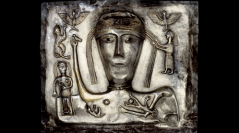

 Anthropozoologica
54 (14) - Pages 141-150
Anthropozoologica
54 (14) - Pages 141-150The Gundestrup “cauldron” is a late Iron-Age silver ceremonial vessel found in Denmark in 1891. The busts depicted on the seven outer-plates – one is missing – are thought to represent deities but have not been confidently identified. This paper identifies the species of the birds on plate f and its symbolism allowing identification of the deity, the depicted event and its religious significance. The birds have the distinctive zygodactyl foot-morphology of the common cuckoo (Cuculus canorus Linnaeus, 1758). This species is also identified on a number of other widespread European artifacts where it was previously thought to be a bird of prey. The plate depicts a goddess in triplicate flanked by two cuckoos releasing the first cuckoo of spring. The bird is an obligate brood-parasite, laying its eggs in other birds’ nests, leading to misconceptions of its life cycle: no females, nests or identifiable eggs. It was assumed the male birds mated with the host females. Hence, the cuckoo symbolized male fertility across its Eurasian summer range and was associated with several widespread European goddesses of fertility who were probably also associated with mead and the planet Venus. The evidence presented strongly suggests that these deities were known in the Bronze Age.
Gundestrup cauldron, prehistoric religion, cuckoo, goddess, Venus.